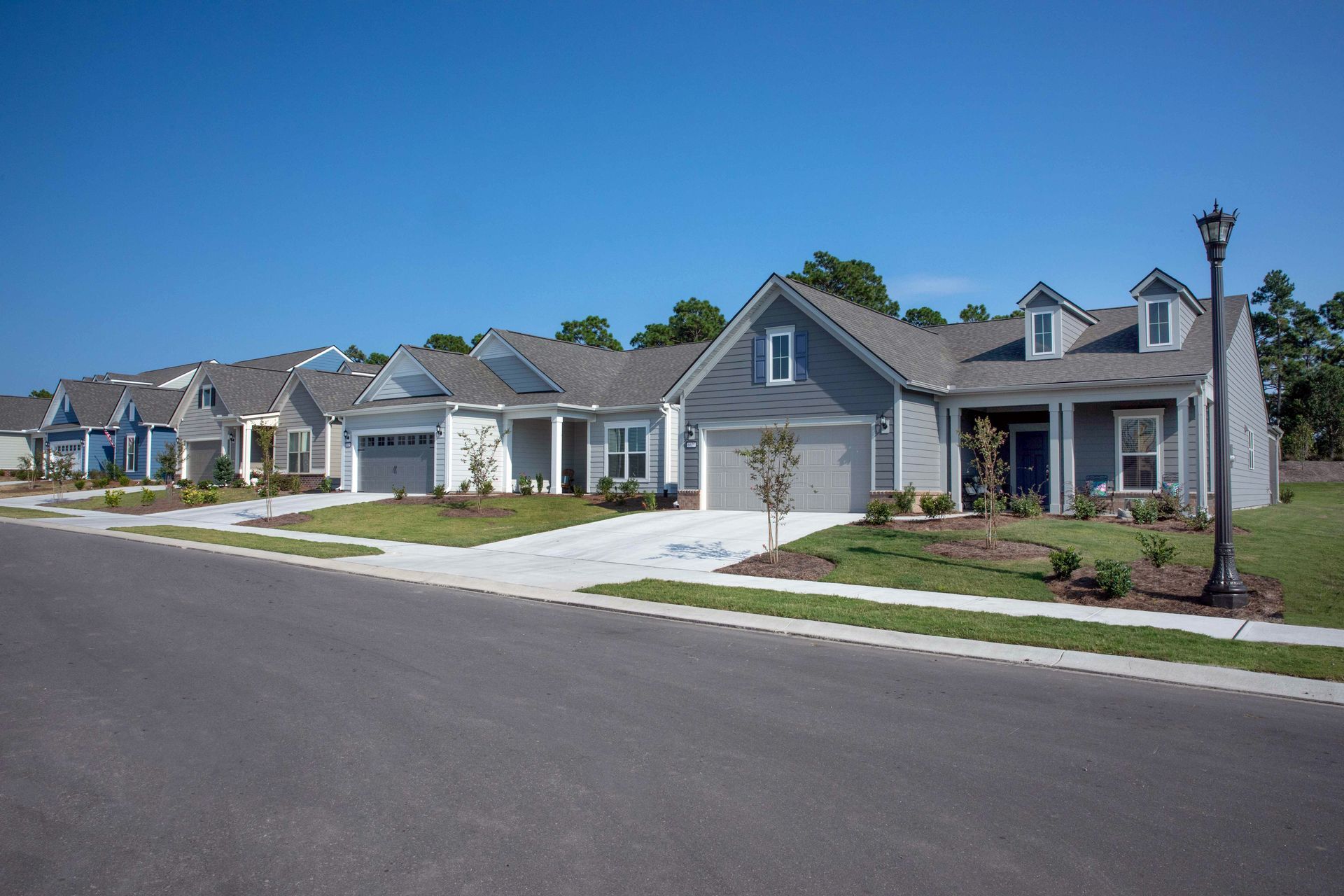Are You Too Young to Buy a House?

Owning a house is often a symbol of financial security. However, purchasing a home requires a young buyer to navigate new financial hurdles and lifestyle commitments. The process can be daunting if you’re trying to balance rising housing costs with a new career and obligations like student loan debt.
If you’re ready to start house hunting, this article will help put you on the path toward homeownership.
Is There a Minimum Age for Homeownership?
In most states, you must be 18 to own a house. In Alabama and Nebraska, you must be 19, and in Mississippi, you must be 21.
Someone younger could technically have their name put on a home title, such as in the case of inheritance. However, most states don’t allow minors to own, manage or sell a home until they reach the age of majority.
What Is the Average Age to Buy a House?
The median age of first-time homebuyers has reached an all-time high of 38, according to the 2024 Profile of Home Buyers and Sellers from the National Association of Realtors (NAR).
That’s roughly a decade older than the average age in the 1980s when most first-time buyers were in their late 20s.
Overcoming Financial Hurdles: Challenges for Young Homebuyers
These are the common obstacles that young homebuyers may face when trying to break into the real estate market.
- Down payment and closing costs: Many buyers can put down as little as 3% to 5% to secure a home loan. However, a down payment and closing costs can pose a significant barrier to entry for young people. The Federal Reserve Bank of St. Louis indicates that the median home price in the U.S. is $420,400, which means a 3% down payment would be $12,612.
- Your credit score: Regardless of age, one of the most significant challenges to homebuying is getting a good interest rate. A low interest rate will hinge on a good credit score, which takes time to build. Many young people may only just be opening their first credit cards in their late teens and early 20s. A short credit history can also hinder a lender’s willingness to issue a mortgage.
- Debt-to-income ratio: A young person who is just starting their career may not have a very high salary and could still have personal, student or car loans to pay off. Lenders will want to see a good debt-to-income ratio when providing a mortgage.
Advantages of Being a Young Homebuyer
Purchasing real estate at a young age has many benefits, including building equity in your home and the potential for its value to appreciate over time.
The Financial Benefits of Early Homeownership
Real estate is an investment that reliably appreciates over time. Those who buy young can often build more equity over the lifetime of their investment.
“Every time you wait to buy, there is a gap in pricing,” explains Nikola Cejic, a real estate agent in East Hampton, New York, who purchased his first home while in high school. “Those who wait keep chasing the market and falling behind.”
Homeowners are eligible for more significant tax advantages than renters. They can often write off home-related expenses, including state and local real estate taxes and home mortgage interest.
Buying a Home Is a Long-Term Investment
Real estate is America’s favorite long-term investment, according to Gallup. Compared to stocks or gold, it continues to be the primary way Americans invest. Investing in a home also gives you a tangible asset to pass on to future generations.
NAR research reveals similar findings in its 2024 Profile of Home Buyers and Sellers:
- 79% believe a home purchase is a wise investment
- 39% said buying a home is better than owning stock
Predictable Costs: The Stability of Mortgage Payments
Unlike rent, your mortgage payment will be the same every month for the life of the loan. NAR indicates that 91% of first-time buyers finance their home purchase, and a mortgage is often the most costly payment an owner will make. As a result, many people find value in knowing exactly what they’ll pay every month.
However, some hidden costs of homeownership will continue to rise. These include utilities, property taxes, homeowners insurance and maintenance. Residents of homeowners associations may also see their fees increase over time.
Life Planning
Buying a home is often considered an excellent financial investment, but it’s also an investment in your lifestyle. Many homeowners prefer to own simply because it allows them more control over their residence, from paint and interior design to building a shed in the backyard. A home can also provide a sense of stability for families.
Potential Drawbacks for Young Homebuyers
While buying young can have significant financial benefits for those who can afford it, it’s common for young people to experience uncertainty in the future.
Financial Strain: A Major Hurdle for Young Homebuyers
It’s very common for young people to experience financial hardship. For those who pursue a degree, the average federal student loan borrower has over $37,000 in debt. On top of that, those who are new to the workforce typically have not reached the salaries of those 10 or more years into their field.
The upfront costs associated with homebuying, including the down payment and closing costs, are often cited as the most significant barrier to entry. Additionally, being a homeowner means you are on the hook for any maintenance required on the property.
“You have a lot more maintenance to manage, whether that’s hiring someone or doing it yourself,” says Nikki Taylor Friedman, a real estate agent in Huntington, New York, who purchased her first home at age 25. “In addition to the mortgage payment, there are additional costs. You’re going to have to pay for wifi and utilities wherever you live, but when you own you have to pay for the landscaping, painting and staining, if a window breaks – those things are your responsibility.”
Lifestyle Limitations: The Trade-offs of Early Homeownership
Buying a home ties you more closely to a specific geographic area. If you’re seeking a new job opportunity, relocating may be more challenging as you’ll need to either rent your home or prepare it for sale.
Uncertainty of the Future
Young people commonly don’t have a clear understanding of what their future holds.
“If you’re looking to purchase and you’re not sure what your life is going to look like in five years, maybe buying a big single-family home is not the ideal situation for you,” Friedman says. “But there are many ways to look at it. Can you sell and make a profit? We’ll never know what the market will look like five years from now, but we can look at the history of the cycle and determine whether or not this is going to be a good long-term investment for the buyer.”
Are You Ready to Buy a Home?
Ultimately, whether or not you’re too young to purchase a home has more to do with financial and lifestyle readiness than age alone.
Financial Stability
Thoroughly evaluate your finances before starting the search. You must understand your income, debt-to-income ratio, credit score and savings if you plan to buy a home.
“You don’t want to be cash poor and on-paper rich,” Cejic says. “You don’t want to overextend yourself.” He suggests that your fixed monthly expenses should not exceed 33% of your income. This includes the monthly mortgage payment, insurance and property taxes, as well as any outstanding debt, such as student and car loans. Having three to six months of living expenses in savings is also wise.
Lifestyle Considerations
Consider your lifestyle and what you want in a home before starting your search. This includes factors such as location, home type and the number of bedrooms and bathrooms. It also means evaluating whether or not you’re prepared to take on the financial responsibility of homeownership and property maintenance.
If you are in a relationship, you and your partner must discuss your needs and wants and your long-term financial and lifestyle goals.
Speak with the Experts
Purchasing a home is a significant financial decision. Consider speaking with a financial advisor or lender to determine if you’re ready to buy. Familiarize yourself with the steps involved in getting a mortgage. Consult local builders, real estate agents, and trusted friends and family who’ve recently purchased property in the same area.
Don’t Feel Pressure to Buy
There is often external pressure to purchase a home. Sometimes, this comes from family members, but it can also come from peers. You must feel confident in your decision to buy a house. If the desire mostly comes from a need to impress others, it’s worth it to reconsider.
Alternatives to Homeownership
If you cannot afford the purchase price of a single-family home, or it’s simply not the right time, there are alternatives.
- Living with family: If you have a family member you can live with, doing so can help you save money to purchase a home in the future.
- Renting: Renting is an excellent option if you aren’t ready for homeownership or want to live a more urban lifestyle.
- Multi-family residences: If you can’t afford a single-family home, consider purchasing a condominium or townhome.
- Buy with a friend: Cejic says, “If you and your best friend have been renting together, why not go in on a home together and put it in an LLC or a trust? It will build equity for you both, then later down the line you can sell and purchase on your own.”
A rent-to-own property is an alternative that buyers will likely not be able to find in today’s housing market. Rent-to-own refers to a legal arrangement where a tenant pays rent to a landlord and can purchase the property later. “Sellers aren’t looking for that option right now,” Friedman says. “They don’t have to rent because they can find a buyer who could buy flat out.”
The Bottom Line: When Do People Buy a House?
Ultimately, the decision to buy a home has less to do with age and more to do with your circumstances and financial goals. While the dream of homeownership can be enticing, it’s crucial to weigh the pros and cons carefully. You must understand the financial implications, lifestyle considerations, and potential challenges to help you make an informed decision.
Source: Homes.com
Dusty Rhodes Properties is the Best Realtor in Myrtle Beach! We do everything in our power to help you find the home of your dreams. With experience, expertise, and passion, we are the perfect partner for you in Myrtle Beach, South Carolina. We love what we do and it shows. With more than 22 years of experience in the field, we know our industry like the back of our hands. There’s no challenge too big or too small, and we dedicate our utmost energy to every project we take on. We search thousands of the active and new listings from Aynor, Carolina Forest, Conway, Garden City Beach, Longs, Loris, Murrells Inlet, Myrtle Beach, North Myrtle Beach, Pawleys Island, and Surfside Beach real estate listings to find the hottest deals just for you!
Share




